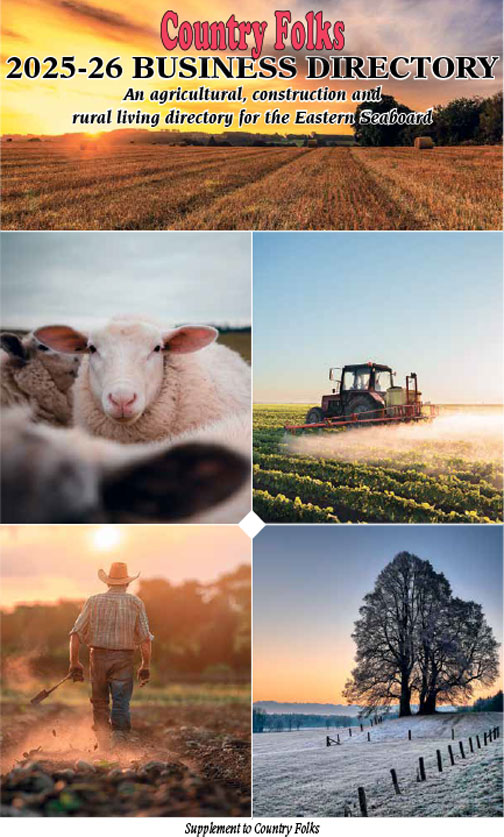November 5, 2025
Soil health: The answer to Zeb Winslow’s questions
SCOTLAND NECK, NC – Zeb Winslow’s path to understanding the wisdom of managing for soil health has involved many questions and much experimentation. “When I ask someone why something won’t work, if I don’t like the answer, I’ll try to figure out myself if it will or won’t work,” he said. “I’m not sure if that’s a blessing or a curse.” Zeb (the third) and his father Zeb Jr. farm a little over 900 acres of cropland in Halifax County, in the sandy loam soils east of I-95. Zeb III is the fifth generation of his family to farm here. Zeb III’s great-great-grandfather moved to the area from Kansas City and became successful selling mules up and down the East Coast. He eventually started a dairy, which operated until Zeb Jr. came home from college in the 1970s. At that point the farm transitioned to raising hogs. (The farm still has pivot irrigation which was installed to empty the hog operation’s lagoons. The irrigation is still used when the lagoons fill up with rainwater.) In the ‘90s, Zeb Jr. got out of the hog business and started raising cotton. At one point the farm was 90% cotton. Today the two Zebs raise a roughly equal mix of corn, cotton and soybeans (using soybean varieties from mid-group 3 to late group 4). The farm moved away from conventional tillage in the 1990s, adopting strip tillage with a single species cover crop. In 2013, Zeb III performed an experiment, planting his first multispecies cover crop, on 40 acres. In April, when the cover crop was chest high, Zeb Jr., asked, “How are you going to plant in that?” Zeb III wasn’t sure, so he made calls to farmers who had used multispecies cover crops and asked them what to do. The advice he got was to plant directly into the standing cover crop. Zeb Jr. wasn’t certain, but Zeb III asked for a few days to see how it worked out. “It grew up beautifully,” Zeb III recalled. Today the Winslows roll their cover crop. Initially they used a 24-foot I&J roller (weighing 9,000 lbs.) in a first pass and then came back to plant. Recently, however, they added a roller to the front of their planter so they can roll and plant in the same pass. “The rule of thumb is the cover crops will stay down if they’re rolled when reproductive,” Zeb III said. If the cover crop is too young, it will fall, but after a few days stand back up (unless the stalks are fully crimped). Not long after that first experiment, the Winslows experimented with no-till. Today they are 100% no-till and 100% multispecies cover crop. Their current cover crop mixture contains rye, crimson clover, oats, triticale, radish and vetch. The reason is simple economics – by using multispecies cover crops, the Winslows are more profitable. Yield, while it hasn’t increased, also hasn’t suffered. What has changed is the amount of chemical inputs the farm uses. Inputs have been reduced appreciably, which means the cost of farming has also lowered. The Winslows still use herbicides – not long after planting, they’ll come through and burn down the cover crop with a broad spectrum herbicide, mixed with pre-emergents. Like most farmers, they appreciate that young crops – especially corn – thrive when not under pressure from competing weeds. However, they do like the role cover crops play throughout the cash crop’s growing season. They plant corn and cotton on 36-inch rows and beans on 18-inch rows, and plant the cover crops on 18-inch centers – but offset so they are between the rows of the cash crop. “One of the reasons we use a mix of cover crops is to have a residue throughout the growing season to help retain moisture and act as erosion control,” Zeb III said. He’s found clover and vetch break down in the first 45 days, then the oats will decay, then finally the rye and triticale. The Winslows continue to experiment. For example, a few years ago, when they were growing wheat, they weren’t happy with the establishment they were getting from their grain drill. So they added small grain plates to their Deere 1785 planter. (Today they also have a 1720 planter.) “It worked so well,” Zeb III said, “we decided to use the planter for our cover crop as well.” Because the planter does a good job with the cover crop seed, they’ve been able to reduce their cover crop seeding rate from 50 to 60 lbs./acre to 30. “With the amount of growth that we get in this part of the world,” Zeb III said, “we need to do what we can to minimize the risk to the cash crop from the cover crop. “My initial thought was reducing the seeding rate would reduce the above-ground biomass,” he continued. But that hasn’t occurred with the lower seeding rate. His supposition as to why? The individual plants in the cover crop have less competition due to the lower seeding rate and thus are able to develop a better root system. “On-farm trials are important to me to prove what I’m trying to do before I go broad acre,” Zeb III said. For example, he’s spent the past six growing seasons performing an on-farm trial to measure the effect of pre-season fertility applications in a 30-acre field. One 10-acre section hasn’t received pre-season truck-spread fertility (lime, P or K) over the past six growing seasons. The other 20 acres still received fertility over those years. Nitrogen was applied at planting, at side-dress and as a foliar spray (if appropriate) across all 30 acres. Yields have varied. In some years, the yields on the test plot were better than the control 20 acres; in other years, yields were slightly less than on the control acres but not enough to offset the cost of the pre-season fertility. Soil fertility levels have remained very close in both the test and control zones. Zeb III attributes the test plot’s ability to be more or less equally as productive as the 20 control acres to the benefits of cover cropping. This coming planting season, he may expand the number of acres on which he skips the pre-season fertility application. The Winslows have partnered with outside groups to perform trials on the farm. The farm is in year two of a program with the Better Cotton Initiative to test soil and plant health, gathering data and measuring the impacts of management practices on productivity. “We’re pulling tissue samples and soil samples of the cash crop and the cover crop, trying to test the cycling of nutrients to see if higher soil health will build higher yield and higher cycling,” he said. The farm is also in year one of a two-year study funded by USDA’s SARE to measure how excess fertility can be mobilized by biology and living roots, captured by a cover crop and then released into the soil for the following season’s cash crop. As part of this, they’re testing soil microbiology, using typical soil tests as well as PLFA testing, Haney soil tests and BeCrop microbiome testing. It’s an ambitious agenda, but Zeb III is game. Because of this success in developing a real-world example of how farming for soil health can be beneficial, Zeb III is becoming a sought-after speaker at farm events. “I don’t like to be away from my family,” he said, “but if I’m asked, I try to make it. I do it because a lot of people answered my questions early on.” The Winslow farm is also one of two finalists for the 2025 Carolinas Leopold Conservation Award. (The other finalist, Grayhouse Farms, was profiled in the Oct. 18, 2024, issue of Country Folks Mid-Atlantic edition.) Beyond crops, Zeb III is thinking about other ways to bring balance and profitability to his farm. As such, he’s considering adding cattle to his operation to graze the crops and develop an even more robust regenerative agronomic system on his farm. Along the way, no doubt there will be more questions, more testing and more experiments. by Karl H. Kazaks





